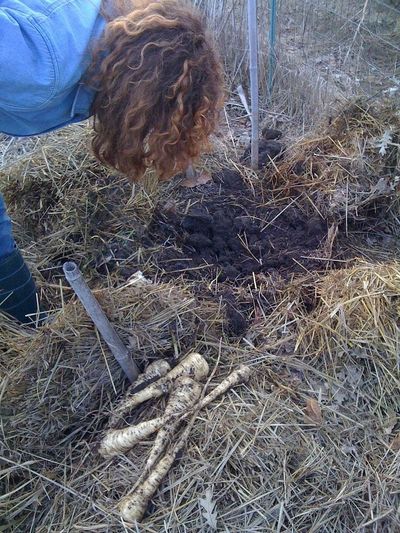Can You Overwinter Parsnips?
Absolutely! Overwintering parsnips is a great idea. Just be sure when overwintering parsnips, that you mulch them heavily. When I say heavily, provide them with 6 to 12 inches (15-31 cm.) of straw or compost mulch. Once they are mulched as such, there is no further parsnip winter care required. The roots will store beautifully until you are ready to use them. If you live in an area that has mild or particularly rainy winters, it is better to dig up the roots in late fall and store them in a cellar or like area, preferably one with 98 to 100% humidity and between 32 and 34 degrees F. (0-1 C.). Likewise, you can keep them in the refrigerator for up to four weeks. For overwintered parsnips, remove the mulch from the beds in the spring and harvest the roots before the tops begin to sprout. Never let the plants flower before harvesting. If you do, the roots will become woody and pithy. Given that parsnips are biennials, if the seeds just sprouted this year, it is unlikely that they will flower unless stressed.
How to Grow Parsnips in Winter
Parsnips prefer sunny areas of the garden with fertile, deep, well-draining soil. Parsnips are nearly always grown from seed. To guarantee germination, always use a fresh pack of seeds since parsnips lose their viability rapidly after about a year. It’s also advisable to soak the seeds overnight to hasten germination. Plant parsnip seeds in the spring when soil temperatures are 55 to 65 degrees F. (13-18 C.). Incorporate plenty of organic matter into the soil and an all-purpose fertilizer. Keep the seedbed evenly moist and be patient; parsnips can take over two weeks to germinate. When the seedlings are about 6 inches (15 cm.) in height, thin them to 3 inches (8 cm.) apart. High summer temperatures reduce growth, decrease quality, and cause bitter roots. To protect the plants from higher temps, apply organic mulches such as grass clippings, leaves, straw, or newspapers. Mulches will cool the soil and reduce water stress, resulting in happier parsnips.
